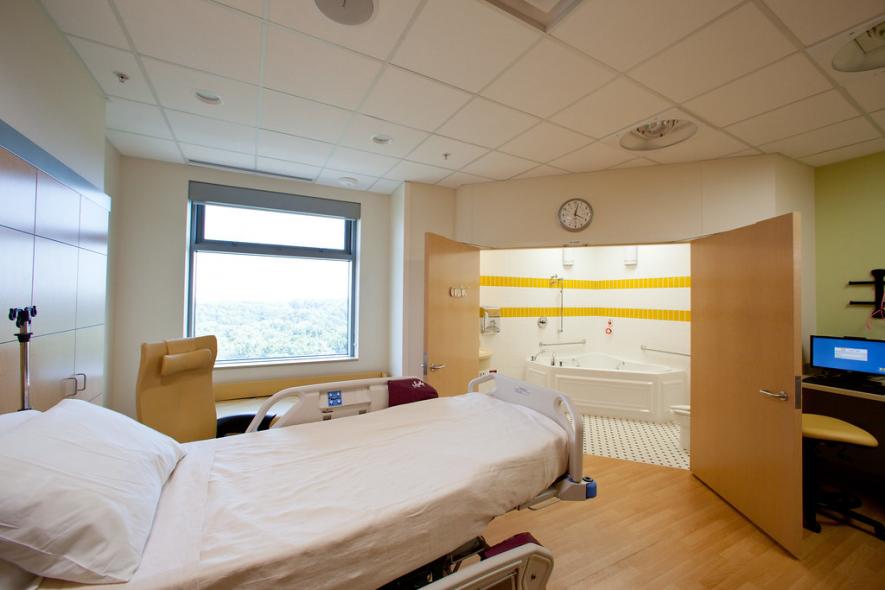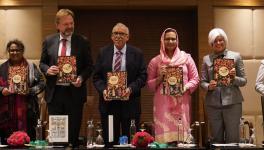Failing to Serve Marginalised, Private Health Sector Under PMJAY Burdens Public Systems

Representational image. | Image Courtesy: flickr
The Narendra Modi-led NDA government at the Centre has been quite upbeat over the participation of private players in the health sector, be it in the National Health Policy 2017 document or the latest NITI Aayog policy prescriptions – apparently, Pradhan Mantri Jan Arogya Yojana (PM-JAY) is where the sector affected important interventions.
However, a look at the data for hospital admissions in the private sector under PM-JAY from when the scheme was launched in September 2018, shows that marginalised communities constituted only a minuscule fraction of total admissions in the private sector. Of the total private hospital admissions under PM-JAY, Dalits are only about four per cent while 1.6% of tribals were admitted in private hospitals empanelled under PM-JAY from the beginning of the programme till August 2021.

The majority from among the marginalised section of the population would be availing health services in the public sector. What the above figures tell us is that the private sector is certainly not catering to marginalised groups.
Data on total authorised hospital admissions (public+private) in FY 2019-20 and 2020-21 were sourced from questions answered in the Lok Sabha. The PM-JAY scheme was launched in September 2018; hospital admissions for the period between September 2018 and March 2019 were obtained from data – between September 2018 and November 2019 – provided by the government in Lok Sabha. As there is an overlap in this period and FY 2019-20, the number of admissions were adjusted for eight months (April to November) and calculated for the period between September 2018 and March 2019.
Authorised admissions in the private hospitals have been calculated by taking 63% of the total authorised hospital admissions under PM-JAY. Private hospitals account for 63% of all PM-JAY claims and this percentage has been taken as a proxy for calculating private hospital admissions.

Comparing % Private Hospital Admissions for Dalit and Tribal to their Share in Poor Eligible Population
If we take a look at the proportion of Dalit and Tribal populations within the total poor population eligible under PM-JAY, the comparison is stark. We estimate the total percentage of poor Dalit and Tribal population which should be covered under PM-JAY from the Multidimensional Poverty Index (MPI) and Census 2011 data. The latest MPI estimate of total poverty percentage in India is 27.9%. As per the MPI Report (2018), 33% of the Dalit population and 50% of the tribal population is poor. In the 2011 Census Dalits and Tribals constitute about 16.6% and 8.6% of the total population respectively. Combining the two data points we arrive at the percentage of poor Tribals and Dalits in the total poor population eligible under PM-JAY – 19.7% Dalit and 15.4% Tribal.
Figure: Share of Poor Dalit and Tribal in Private Hospital Admissions under PM-JAY vis-à-vis Share in Poor Eligible Population (%)
Of the poor dalits who comprise 19.7% of total poor eligible for PM-JAY, only four per cent were admitted to private hospitals. Similarly, of the poor tribals, who comprise 15.4% of the total poor population eligible for PM-JAY, only 1.6 % were admitted to private hospitals.
Skewed Spread of Private Hospitals & Bed Strength
As per the National Health Authority (NHA) documents, over 72% of the private hospitals are located in just seven States (Uttar Pradesh, Rajasthan, Tamil Nadu, Gujarat, Maharashtra, Punjab and Karnataka). Most of these states are those which already had long-standing state insurance schemes operational since before the PM-JAY.
Also, private hospitals have an urban bias, leaving out the rural areas or small towns. Studies suggest that the distribution of private facilities favours metropolitan cities, with distribution being most skewed in case of corporate hospitals, nearly 67% of which are located in big cities.
Moreover, although the number of private hospitals operating and being active under PM-JAY may exceed the number of public hospitals, private hospitals are relatively smaller and the number of beds are much lesser than what their public counterparts possess. As noted by the NHA policy brief, over 77% of private hospitals have reported 50 or fewer beds and 44% have reported fewer than 25 beds.
Health Insurance Market and Private Sector Profiteering
In the EPW Ravi Duggal and Shailender Hooda studied the health insurance market in India and argued that “health insurance is clearly not a viable option for India given unregulated healthcare markets and the rigidities of health insurance claims processing.”
Analysing the 75th Round National Sample Survey data, they show that although public funded health insurance schemes such as the PM-JAY claim to be cashless, only seven per cent of patients either received free care or their entire medical expenditure amount was reimbursed; around 93% of hospitalised cases incurred expenditure more than the reimbursement amount, which was paid from their own pocket.
In fact, even during the pandemic, “insurance is denying, delaying or reducing claim pay outs to COVID-19 affected people who have been hospitalised” and protecting its profits, the authors opined.
Cream Skimming by Private Sector
As per the NHA policy brief, most private hospitals are empanelled for surgical packages and are more strongly oriented towards tertiary care. The private hospitals also dominate super-specialities such as cardiology, cardiothoracic and vascular surgery, neurosurgery, etc. Almost two-thirds of private hospital claims are for surgical packages.
This tendency of the private sector is nothing but cream skimming – a practice where the private hospital provides for only those conditions which are more profitable; Critical cases are refused and relatively safe patients are admitted. This results in the the more critical, end-of-life care going to the public sector.
In the case of PM-JAY, what has been observed is that private sector is predominantly handling surgical packages (such as cataract, single stent angioplasty, and hip fracture) instead of more cost intensive medical care packages. Medical care, bulk of which is life-saving, critical care and also cost intensive, is being taken care of by the public hospitals. Nearly 75% of the claim value under PM-JAY has gone to the private sector. In the long run, such tendencies gradually work toward pushing the public health system into non-profitable, cost intensive care, thus weakening it further.
Under PM-JAY, the aim was to mitigate catastrophic expenditure on medical treatment incurred by the poor, adding significant additional capacity for specialities offered by government hospitals through private sector involvement. However, the experience shows, that instead of playing a complementary role, the private sector is rather weakening the public health system and not catering to the marginalised sections of the population. Under the present scenario of health sector in India, the only sane choice is to abandon the insurance-based provision of healthcare, stop the reckless push towards privatisation and instead work towards strengthening the public health system. Are “the powers that be” paying heed?
Get the latest reports & analysis with people's perspective on Protests, movements & deep analytical videos, discussions of the current affairs in your Telegram app. Subscribe to NewsClick's Telegram channel & get Real-Time updates on stories, as they get published on our website.
























